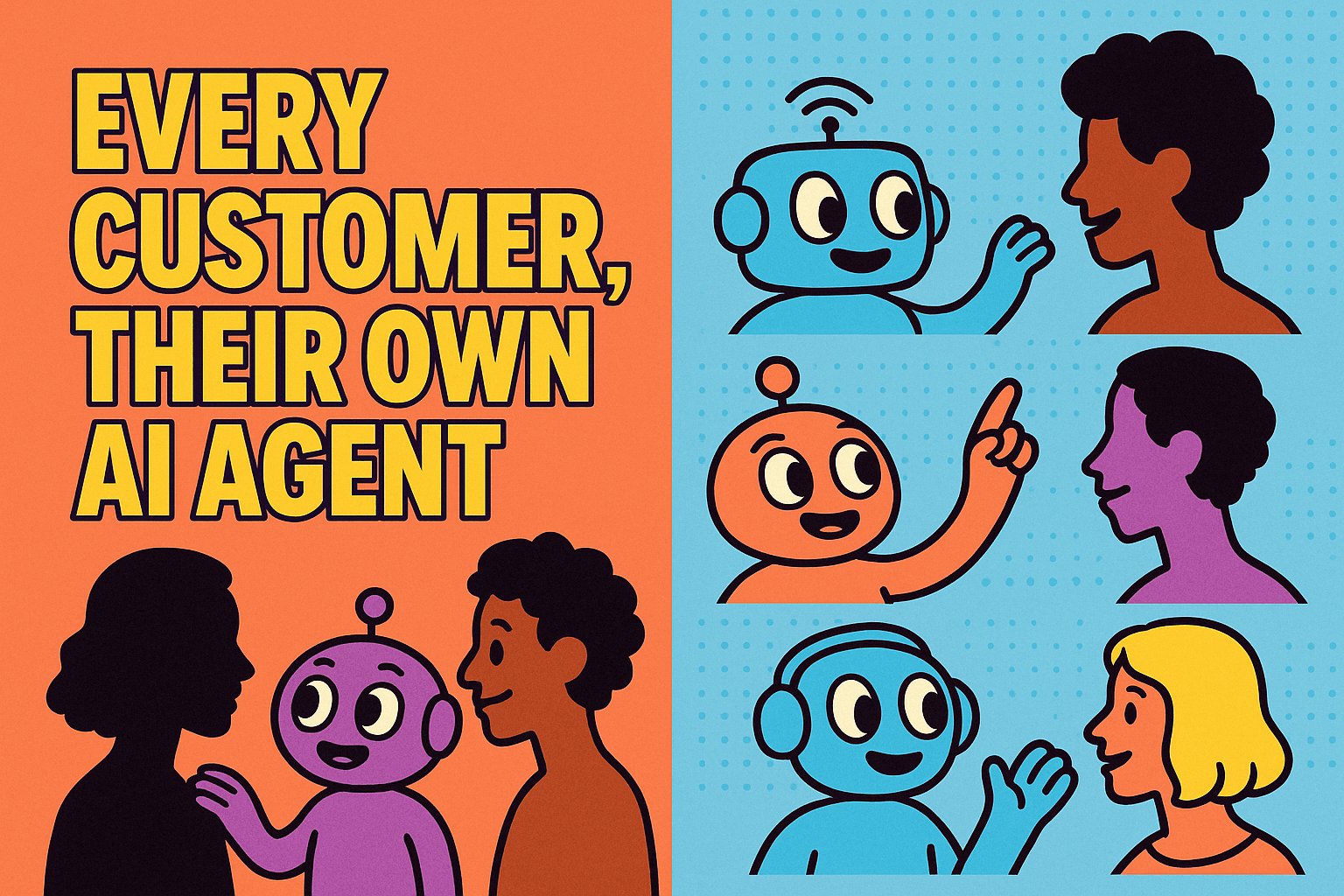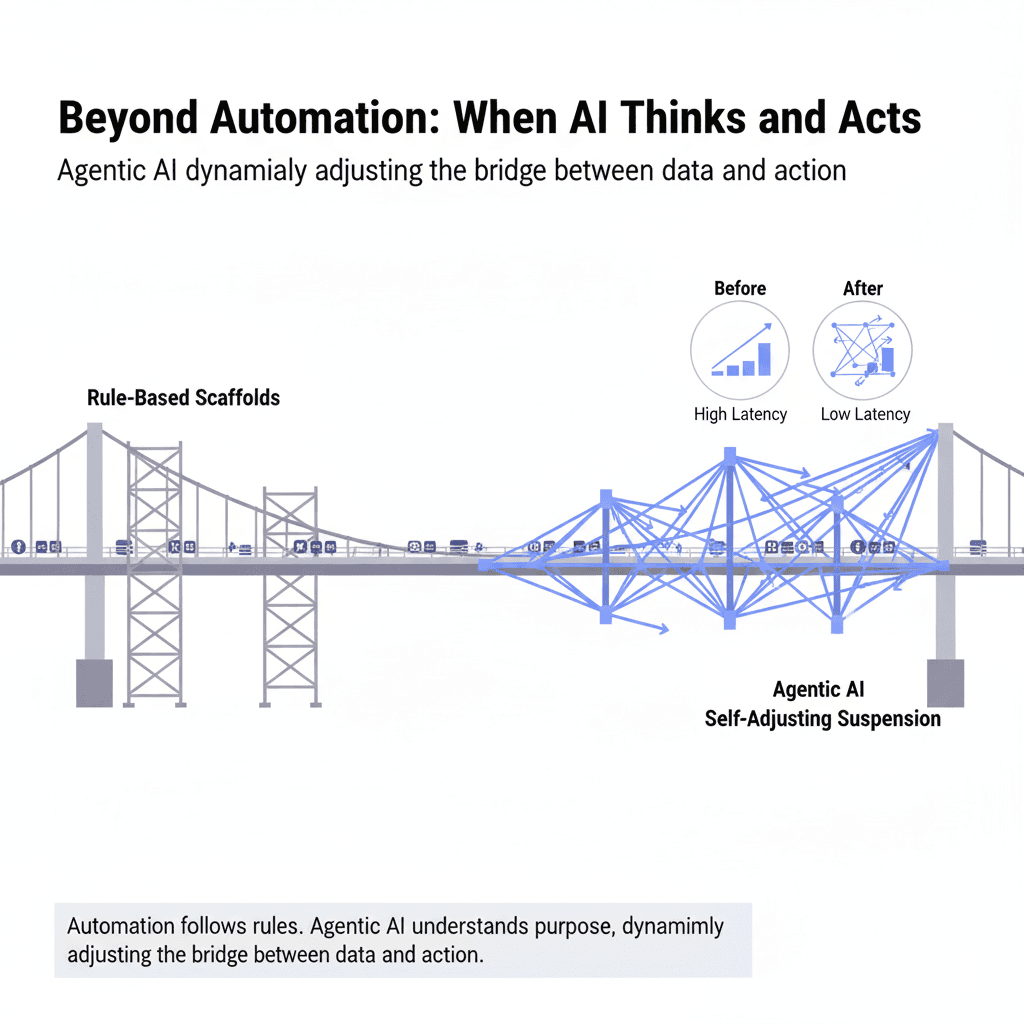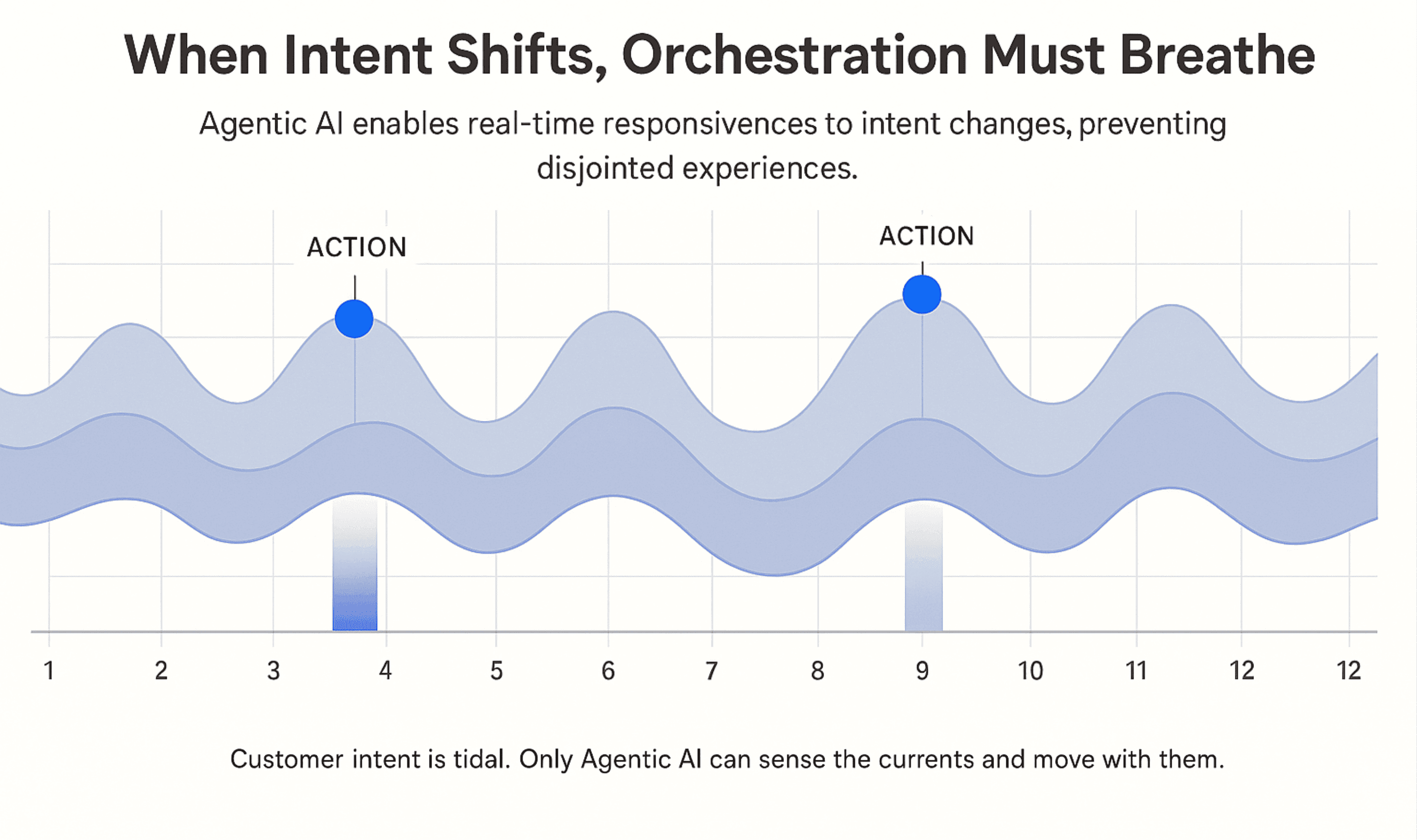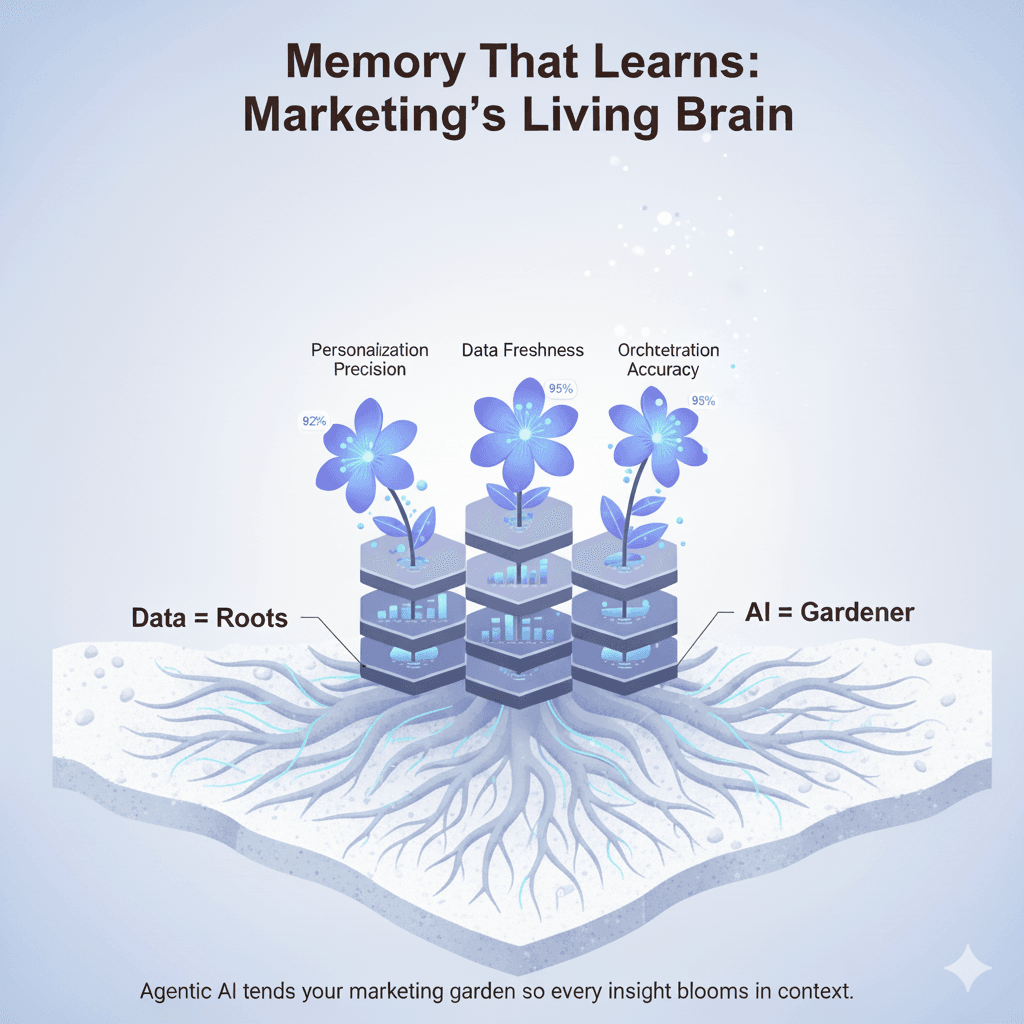Agentic AI in Journey Orchestration: How it Transforms Customer Journeys

Agentic AI in journey orchestration reshapes how businesses engage with customers by moving beyond static, rule-based systems to dynamic, personalized, and proactive interactions across customer stages and channels.
This advanced approach allows customer journeys to adapt autonomously in real-time, anticipating individual needs and fostering deeper relationships. "The Customer Journey Is No Longer Linear. It’s Living,"
Why Aren't Customers Following Our Maps Anymore?
Remember when navigating the customer journey felt like following a nice, neat roadmap? You know, a clear beginning, a middle, and a predictable end.
Well, that’s a distant memory now, isn't it? Our customers, bless their hearts, they don't follow maps anymore.
They're more like explorers blazing their own trails, zipping between channels, researching on a whim, and frankly, expecting instant, deeply personal attention. This wonderfully chaotic new reality makes those old journey maps feel less like helpful guides and more like ancient scrolls gathering dust in some forgotten archive.
A lot of businesses are really struggling to keep up, often stuck with these static, rule-based systems that just fall flat against what people expect today.
But what if your customer journey wasn't just automated, but truly, truly autonomous? What if it could learn, adapt, and even guess what you needed before you even knew it yourself, making every interaction feel genuinely effortless and oh so relevant?
This isn't just some dreamy fantasy; it's the solid promise of journey orchestration powered by Agentic AI.
This isn't merely a little upgrade; it's a big, fundamental change, completely reshaping how we connect with the folks who matter most: our customers.
In this article, we’re going to dig into surprising and truly powerful ways Agentic AI is turning customer journey orchestration on its head, pushing us way beyond just reacting to problems and toward proactive, intelligent engagement that doesn't just make people happy, it builds real, lasting trust and loyalty. Get ready, because you might just have to rethink everything you thought you knew about customer experience.
How Does Agentic AI Create Dynamic Journey Orchestration From Static Roadmaps?
For too long, we've pretty much been stuck with static journey maps and these rigid, predefined automation flows. Sure, these sequences gave us a basic structure, a foundational idea, but honestly, they often just buckled under the weight of real-world customer interactions.
They simply couldn't account for the wild, unpredictable, and frankly, fluid nature of how people actually engage with brands these days.
Agentic AI is really changing all of that, transforming those fixed, rigid paths into dynamic, living experiences that just breathe right along with your customers.
Why Are Our Old Maps Failing Us in Customer Journey Analysis?
Traditional customer journey analysis, more often than not, ends up giving us these beautifully designed diagrams. The trouble is, they usually become outdated practically before the ink even dries.
They pretty much assume everyone walks a nice, straight line, and they really, really struggle with the true complexities of modern customer behavior. Consider these common issues:
- The Multichannel Maze. Folks rarely, if ever, stick to just one channel. They might start scrolling on social media, then hop over to your website, shoot a question to chat support, and then, believe it or not, pick up the phone and call you, sometimes all at once. Our old maps simply can't keep pace with that kind of hustle.
- Intent's Shifting Sands. A customer's priorities, what they're trying to do, or even just their mood, can change in a flash. Yesterday they were just browsing for kicks; today, they desperately need urgent help. Our systems really need to adapt on the fly, not just blindly follow some preset script.
- The Data Deluge. The sheer, overwhelming volume of unstructured data we get, from conversations, from social media whispers, from all those nuanced little behavioral cues, it's just too much for static rules to process effectively. It's like trying to drink from a firehose, if you catch my drift.
What's the upshot of all this? Generic, often irrelevant interactions that honestly just frustrate customers, chip away at their trust, and leave them feeling like, well, just another number in a spreadsheet. And nobody likes that, do they?
How Does Agentic AI Breathe Life into Customer Journeys?
Agentic AI doesn't just run on simple "if this happens, then do that" logic. It actually perceives, processes, and understands things.
By constantly chewing on real-time behavioral signals, drawing from rich historical data, and building a deep understanding of the context, Agentic AI systems can figure out what someone's trying to do right now and then gracefully guide them.
This means the journey isn't just mindlessly followed; it's continuously redrawn, optimized, and personalized, adapting to every individual action and every little nuance. It's almost like having a seasoned sea captain on board, always trimming the sails to catch the best wind, making sure every passenger has the smoothest, most efficient voyage possible.
As the smart folks at Engagely.ai put it so well,
"The Customer Journey Is No Longer Linear. It’s Living." That really sums up what Agentic AI promises: a truly responsive, ever-evolving journey that genuinely understands and bends to the customer's will, making every single step feel intuitive and truly intentional.
So, are you ready for your customer journeys to really come alive?
We should probably explore some personalized insights into dynamic customer engagement. It could be quite interesting.
How Does AI Anticipate Your Needs in Journey Orchestration for Proactive Problem Solving?
Just imagine a customer service experience where potential headaches are sorted out, or even completely avoided, before you even realize they might pop up. Sounds pretty futuristic, right?
Well, Agentic AI is actually making this a real, tangible thing, fundamentally shifting customer journey optimization from that frustrating reactive firefighting drill to a proactive, predictive ballet of pure anticipation.

Why Are We Moving Beyond Reactive Support to Get Ahead of the Game?
Traditional customer service, by its very nature, is mostly about reacting.
A customer bumps into a problem, they hit a snag, and then they reach out for help. This almost always creates a moment of pure frustration, and often, it leads to them walking away if the fix isn't quick or satisfactory.
However, many of these issues could have been neatly prevented. Agentic AI totally changes the rules of this game.
It uses really smart analytics and machine learning to constantly watch a huge range of customer behaviors and data points.
This never-ending vigilance lets it spot subtle patterns, predict potential roadblocks, or even guess at emerging needs before they blow up into full-blown problems.
Think of it this way: it's like having this incredibly sharp concierge who notices a little wrinkle in your travel plans and smooths it out before you even get wind of it.
How Does Real-time Orchestration Provide Truly Seamless Support?
With its powerful real-time orchestration chops, Agentic AI can pick up on subtle hints that might otherwise go completely unnoticed.
Maybe a customer keeps going back to a particular FAQ page, suggesting they're a bit confused. Or perhaps their tone in a chat session starts to sound a little testy.
The AI doesn't just sit there waiting for a complaint. Instead, it proactively kicks off a personalized and perfectly timed intervention. This could look like these examples:
- Offering a handy resource. This involves automatically sending over a specific troubleshooting guide or a quick video tutorial.
- Starting a support chat. The system gently nudges them toward a conversation with a human agent, even pre-filling it with all the context.
- Tweaking product recommendations. The AI senses a shift in what they're looking for and pops up with more suitable alternatives.
- Heading off problems before they start. For example, if a delivery is going to be late, the AI might just automatically shoot out an update and a small discount before the customer even bothers checking their tracking.
Gartner's rather bold prediction really hammers home this potential:
"Agentic AI will autonomously resolve 80% of common customer service issues without human intervention by 2029."
This isn't just about making customers smile; it's about drastically boosting efficiency and cutting down on operational costs big time, all by streamlining support workflows and making the entire customer journey just… better.
It basically turns customer service from something that costs money into a super-powerful loyalty machine.
Want to see how being proactive with AI can help you avoid trouble and really make your customers happy?
How Can Your Personal AI Agent Enable 1:1 Customer Journey Orchestration at Scale?
That elusive dream of truly individualized customer experiences? For the longest time, it hit a massive brick wall: scale.
Crafting a completely bespoke journey for every single customer just seemed like an impossible feat, a luxury only the absolute elite could afford. But hold onto your hats, because
Agentic AI is here to usher in an era of hyper-personalization, basically delivering what amounts to a dedicated "AI agent" for each and every customer, no matter how many you've got.
What is The Big Headache With Personalization at Scale?
Let's just be honest with each other, shall we? Most "personalization" efforts today still largely lean on broad segmentation.
We sort customers into big buckets based on their age, what they've bought, or how they clicked around the website, and then we treat everyone in that bucket more or less the same.
While it's definitely a step up from blasting out generic messages to everyone, this approach often misses those unique little details, those fleeting preferences, and those absolutely critical micro-moments that really shape an individual's journey.
It’s kind of like trying to tailor a suit for a "size medium" when what you really need is a perfect fit, down to the very last stitch.
How Does AI Work For Every Customer Journey?
Agentic AI blows past segment-based personalization. Instead, it acts like an incredibly knowledgeable, totally autonomous assistant for each unique customer. Just imagine it:
A digital companion that builds an unbelievably rich, real-time profile, constantly learning from every single interaction, every little preference someone shows, and every nuanced behavioral hint across all the places they touch your brand.
This deep, ever-evolving understanding allows it to perfectly customize content, special offers, and how it talks to someone, precisely matching their immediate needs and their longer-term goals throughout their entire life with your brand.
As Malte Kosub, who cofounded and is CEO of Parloa, so vividly explains,
"If an airline has 100 million customers, it will have 100 million personal AI agents. And those personal AI agents are guiding customers along the entire customer journey and not just doing customer support. They're doing sales marketing. They are building a relationship."
This isn't just a hopeful vision; it's the future where every single customer feels truly seen, truly heard, and truly understood because they have an AI champion actively arranging their journey.
From first noticing your brand all the way through getting help after a purchase, this AI companion fosters deeper, more meaningful relationships, dramatically improving customer journey optimization by intensely focusing on the individual. It's a game-changer, plain and simple.
You really can unlock the power of truly personal, one-on-one experiences for all your customers. It's not as far-fetched as it sounds.
Why Does AI That Thinks and Acts Represent More Than Simple Automation in Journey Orchestration?
Traditional automation, while it's super valuable for making things efficient, works on a really straightforward idea:
if X happens, then do Y. This rule-based logic is incredibly effective for tasks that are repetitive and predictable. But what happens when things get complicated?
When something unexpected pops up, or when a customer just decides to wander off the path you laid out for them?
Traditional automation just doesn't have the smarts, the subtle understanding, to handle those dynamic situations.
Agentic AI, though, takes a massive leap forward, showing how marketing automation is being replaced by autonomy, showing it can reason, plan strategically, and make truly autonomous decisions.
What Are The Flaws With Rule-Based Workflows in a Marketing Orchestration Platform?
Older marketing orchestration platform solutions, deep down, are basically just fancy flowcharts.
They're fantastic at automating stuff like sending out email campaigns, scheduling social media posts, and managing some parts of how you nurture leads. These systems are brilliant for sequences that you know well and that happen over and over. However, they hit a wall when these conditions apply:
- Conditions Suddenly Change. What if a customer abandons their shopping cart and, at the exact same time, calls support about a completely different product? A system based purely on rules might just trigger two actions that actually conflict with each other. That’s a mess, isn’t it?
- Customers Go Off-Script. If someone doesn't follow the "perfect" journey you envisioned, traditional systems really struggle to adapt, often sending irrelevant messages or completely missing golden opportunities.
- Understanding Nuance. They can't quite grasp the subtle intention behind a customer's actions or react to real-time events that aren't explicitly written into their rules. They lack that basic "common sense" to connect bits and pieces of information that aren't obviously related.
The outcome? A stiff, often irritating experience that feels anything but intelligent.
What Is Agentic AI's Way of Thinking and Doing Things?
Agentic AI systems are fundamentally different because they use large language models, LLMs, as their sort of "brain." This lets them move past just following simple rules and actually engage in a dynamic, goal-oriented process that mimics how a human thinks. Here is how they operate:
- They Perceive. They meticulously gather and process huge amounts of data from all sorts of places – how customers behave, conversations they have, records in your CRM, external events, and a whole lot more. They truly "see" the complete picture, not just fragments.
- They Analyze. With all this comprehensive data, they independently chew on challenges, figure out what customers are trying to do, spot opportunities, and understand the current situation. They don't just register data; they really get what it means.
- They Strategize. Based on what they've analyzed, they then develop detailed, multi-step plans and decide on the very best actions to hit a specific goal – whether it's solving a customer's problem, nurturing a lead, or just making engagement better. They plot out the ideal course, you could say.
- They Execute. Finally, they just go ahead and take action, all on their own. This isn't just limited to your internal systems; they can tap into external tools, integrate with other platforms, and arrange complex, end-to-end workflows without a human having to step in directly. They just get on with the plan.

This goal-driven, intelligent approach means Agentic AI can make some pretty sophisticated decisions and take proactive actions on behalf of humans, autonomously managing entire customer journeys.
It's not merely automating tasks; it's orchestrating complex, adaptive experiences, like a maestro.
The key takeaway here is clear: "Agentic AI refers to intelligent systems capable of autonomously carrying out tasks and making decisions without direct human intervention."
This core ability really unlocks a whole new level of efficiency and personalization, moving way beyond just automating workflows to true, intelligent journey orchestration.
You know, you could totally transform your operations with AI that actually thinks, plans, and acts on its own. It's quite something.
How Does the Human Touch Get Amplified by Empowering Agents, Not Replacing Them, in Journey Orchestration?
There's a common and totally understandable worry that usually comes up when we talk about really advanced AI: that it'll take our jobs.
Will AI really replace us? However, one of the most powerful and frankly, inspiring ways Agentic AI is being used in customer journey orchestration isn't about getting rid of humans at all.
Nope. Instead, it's about giving them incredible power, freeing them from the boring, repetitive stuff, and letting them bring a more strategic, empathetic, and ultimately, a more human experience to customers.
How Are We Shifting the Spotlight for Human Agents?
Just imagine your customer service agents not feeling buried alive in a mountain of repetitive, everyday questions or struggling through complex, manual processes.
When Agentic AI takes on all those transactional tasks answering common questions, directing simple requests, handling basic information your human team is suddenly free from all that tedious work.
This allows them to really focus on the tasks that truly need their unique human skills. Think about these scenarios:
- Tackling Really Complex Problems. Agents can deal with tricky issues that demand critical thinking, a bit of creativity, and a nuanced judgment call.
- Handling Sensitive Conversations. They can navigate delicate chats, calming down tense situations, and offering genuine empathy where a human touch is absolutely essential.
- Building Strategic Relationships. Agents can nurture those high-value customer accounts, fostering true loyalty, and turning quick interactions into lasting connections.
This powerful collaboration, this synergy between human and AI, truly elevates what human agents do. Their work becomes more interesting, more impactful, and infinitely more satisfying, giving them a real chance to shine.
How Does AI Serve as a Co-pilot and a Coach for Human Agents?
Beyond simply offloading tasks, Agentic AI can also be an absolutely invaluable co-pilot or even a virtual coach for human agents.
Picture this: during a live customer conversation, the AI is quietly listening in, processing everything in real-time. It can instantly pull up the most relevant articles from your knowledge base, suggest the best possible responses tailored to how the customer is feeling, or even give real-time feedback on how well the agent is communicating.
This isn't just about making things more efficient; it's about empowering people. Here's how:
- Cuts Down on Agent Stress. By giving instant access to information and guidance, it eases the pressure of needing to know absolutely everything right then and there.
- Boosts Performance Metrics. Agents become more effective, which means quicker solutions and happier customers. It's a win-win.
- Encourages Constant Learning. It acts like a personal, never-ending training tool, helping agents sharpen their skills and adapt to new situations as they pop up.
As Anetta Franz quite wisely points out,
"While AI and automation are vital to scaling CX, it's the human touch that truly resonates with customers."
This quote perfectly sums up what great human-AI teamwork looks like: technology handles the efficiency at scale, but that genuine human connection is what builds deep loyalty.

Agentic AI just makes sure that when you really need that crucial human touch, it's more focused, better informed, and ultimately, much, much more effective.
You should consider empowering your team with AI. It lets them truly focus on what matters most.
Conclusion
The whole world of customer experience isn't just changing; it's evolving at an astonishing, frankly electrifying speed.
Those days of static customer journeys, rigid rule sets, and just reacting to problems are quickly fading into the past. In their place, we're seeing a dynamic, intelligent, and deeply personalized future, all driven by the incredible capabilities of Agentic AI.
This huge shift isn't merely about adopting a few new tools; it’s about completely rethinking how we design, manage, and refine every single interaction to forge meaningful, lasting connections.
Journey orchestration powered by Agentic AI really represents the smart evolution of customer journey technologies. It's a move from just managing journeys to masterfully orchestrating them, like a conductor with a full symphony.
Here at Zigment, we're not just watching this transformation unfold; we're actually right there at the forefront, actively shaping it. We essentially function as that critical Agentic AI layer the intelligent "brain" that allows true journey orchestration to thrive.
Our platform keeps this deep, contextual awareness, making truly autonomous actions possible and putting the "next best action" into play across all channels, in real-time.
We rely on a comprehensive, living data layer, what we call our proprietary Marketing Memory Bank, which doesn't just hold data; it weaves in crucial qualitative signals like a customer's intent and their mood, all derived from some very advanced conversation analysis.
This profound insight lets Zigment execute dynamic, intent-based workflows that intelligently replace those old, static, rule-based systems, ensuring every customer journey isn't merely managed, but autonomously optimized for unparalleled engagement and unwavering loyalty.
So, are you really ready to stop just mapping customer journeys and start orchestrating truly autonomous, intent-driven experiences that will absolutely redefine your customer relationships? It's a question worth pondering…